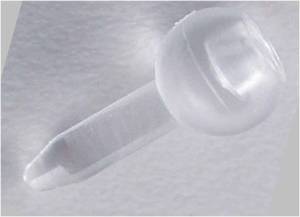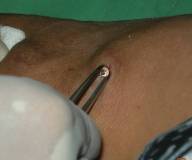I had some interesting comments and email this week, well worth sharing. The first is from Balasaravanan:
Can a blocked fistula cause chest pain?
my mom is having the av fistula in the hand for 8 months since we have not used before 8 months due to some reasons that the creatinine was not so high it was 3 so we didn’t use that now the thing is that now we are going for a dialysis in the neck we asked to put in the hand the doctors said that the fistula is not working so leave it no problem will come some doctors that heart attack will come due to the fistula just leaving in the hand now my mom is having a pain in the chest when my mom gets to sleep and wakes up…….she gets the pain…….! so tell me is that true? reply to me………..
As I understand it, your mom had a fistula put in 8 months ago but it was never used. Now that she needs dialysis, it is not working (maybe blocked?). So they are using some kind of line inserted into her neck. This is a normal routine for people starting dialysis without a working fistula. It does not usually represent a danger for people with heart problems. I know several people who have quite severe heart conditions who have been dialysing for many years.
In fact, dialysis is a key treatment: kidney failure results in fluid build up, since the fluid cannot be removed. This excess fluid puts great pressure on the heart, and dialysis acts to relieve this pressure by removing the fluid.
With regard to the blocked fistula causing heart problems, it is unlikely. Fistulas can become blocked when they are not in use, especially if you have some residual kidney function. For example, many people who have transplants find that their fistula blocks up. Rather than being soft and spongy, it becomes quite hard, with clotted blood.
If it needs to be unblocked (like your mom’s), there are typically two ways to do it:
- If there are small clots, they can be softened and eliminated by inserting a balloon into the blood vessel
- If the clot(s) is large, they bring out the big guns: either a specially designed device called a Percutaneous Thrombolytic Device that uses small wires to gently break up the clot, or an Angiojet, which sprays a saline solution directly at the blood clot breaking it up, and vacuuming out the bits.
Both procedures are done in radiology, typically via ultrasound, while you are awake, with a local anaesthetic. The balloon or other devices are inserted into the fistula via a needle not much thicker than a dialysis needle. I have had the balloon treatment. It is not painful, but it feels strange, with all that pumping and prodding going on while you watch. I must admit that I was nervous of the balloon bursting the fistula wall as the pressure grew, but they were very careful and all was well.
With regard to your mom’s chest pain, I don’t know enough to say anything but the most general comments. Heart pain is not usually related to dialysis or a blocked fistula, but you should ask your mom’s cardiologist as soon as you can.
My BigD Experience, by David in Malaysia
David dropped me an email through the week, and I am delighted to reproduce it here. His experience has been like most people once they decide to get started – health giving and not the drama they expected.
He also gives us the address of his dialysis unit, recommended for travellers to Malaysia. Thanks David, it was great to hear from you.
Hi Greg,
Came across your blog recently from a search on Google. I’ve recently started dialysis and just turned 41 years old. Like you said, kidneys have let us down. Initially I was very depressed knowing that I have to depend on the “Big D” ![]() to live, but after the first few times and my health had improved a great deal, I was glad and thankful that I started dialysis. It was no fun though and I don’t like the needles. I keep telling my doc that I still have hope that God can do a miracle on my kidneys, he just smiled.
to live, but after the first few times and my health had improved a great deal, I was glad and thankful that I started dialysis. It was no fun though and I don’t like the needles. I keep telling my doc that I still have hope that God can do a miracle on my kidneys, he just smiled.
Anyway, I thought I’d like to share with you that if you are planning to visit Malaysia, Kuala Lumpur in particular, you can visit the place that I am doing my dialysis, it is a cool place ![]() The nurses are friendly and funny, joking with the patients, and the Medical Centre is modern and well equipped, and the costs are not expensive.
The nurses are friendly and funny, joking with the patients, and the Medical Centre is modern and well equipped, and the costs are not expensive.
Here are the details:
- Name: Sunway Medical Centre
- Its Dialysis Unit (currently has 21 day machines):
- Its in-house Nephrologists
It is great of you to start your blog site, very encouraging to me.
Take care. Warm regards,
David
More answers to questions next post.
Greg
 Professional dialysis recruitment
Professional dialysis recruitment







